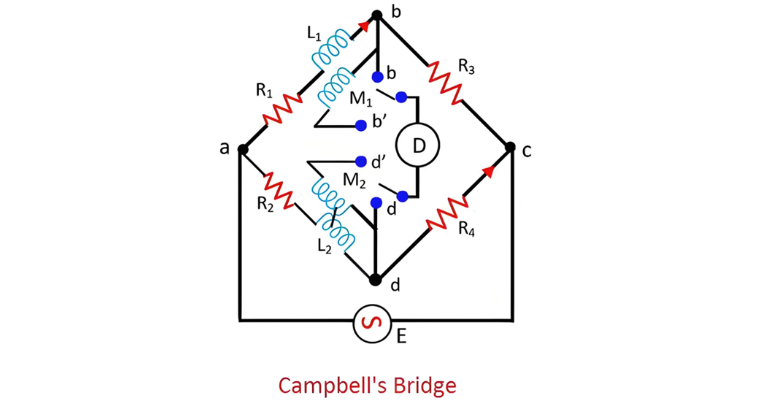Campbell’s Bridge
Campbell Bridge: Definition and Function
Definition
The Campbell bridge is a specialized electrical bridge designed to measure unknown mutual inductance. Mutual inductance refers to the physical phenomenon where a change in the current flowing through one coil induces an electromotive force (emf) and, consequently, a current in a neighboring coil. This bridge is not only useful for determining mutual inductance values but can also be employed to measure frequency. It does so by adjusting the mutual inductance until a null point is achieved in the bridge circuit.
In electrical engineering, accurately measuring mutual inductance is crucial for understanding the interaction between different coils in circuits, such as in transformers, inductive coupling systems, and various electrical machinery. The Campbell bridge provides a precise and reliable method for these measurements. When used for frequency measurement, the null - point detection principle allows engineers to establish a relationship between the mutual inductance setting and the frequency of the electrical signal under test.
The following figure illustrates the concept of mutual inductance, which forms the foundation for the operation of the Campbell bridge.

Step 1: Initial Setup and First Balance Condition
Hello,I'm Wdwiin. A decade of hands-on experience in electrical engineering, specializing in high-voltage systems, smart grids, and renewable energy technologies. Passionate about technical exchange and knowledge sharing, committed to interpreting industry trends with professional insights to empower peers. Connection creates value—let’s explore the boundless possibilities of the electrical world together!















